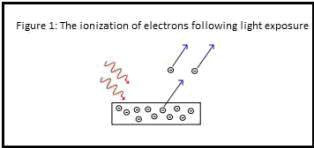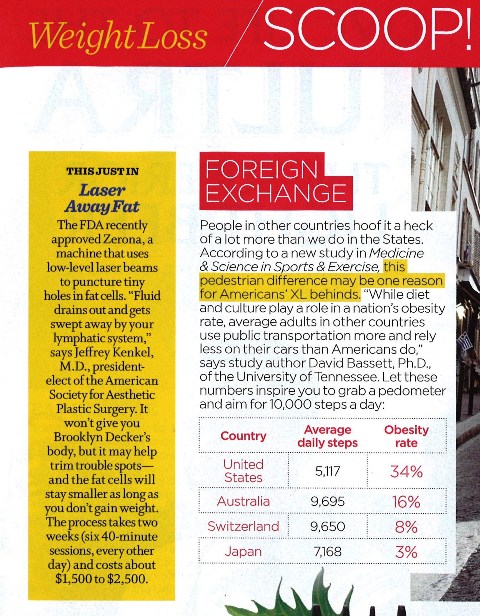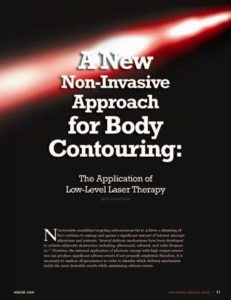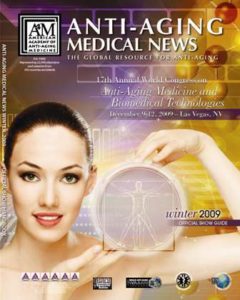How 3LT Can Help Our Equine Friends
Humans domesticated horses millennia ago, changing the way our ancestors traveled, fought, and survived. They are majestic, beautiful creatures built for speed and power.
Sadly, one of the most serious and devastating diseases affecting horses, ponies, and other equine animals is laminitis. Let’s take a closer look at laminitis and how low-level laser therapy can give our equine companions a leg up.
What is Laminitis?
Laminitis describes a condition wherein the laminae—the tissues bonding the hoof wall to the pedal bone in a horse’s hoof—become weakened and inflamed from disruptions in blood flow, leading to tears in the structure supporting the pedal bone within the hoof. Laminitis typically occurs in a horse’s front feet. The condition is caused by various physical and metabolic issues, including:
- An excessive intake of grain or grass
- High levels of insulin
- Enlargement of the pars intermedia in the pituitary gland
- Impact from riding on hard surfaces
- Stress from long distance travel
This can result in tremendous pain, lameness, and deterioration in the hoof. Left untreated, laminitis can cause the pedal bone to rotate and point downwards. In worst cases, the pedal bone will penetrate through the hoof wall.
Laminitis greatly reduces a horse’s usefulness, and many horse owners are forced to put down the horse to prevent further suffering.
Treating Laminitis
Many traditional treatments are expensive and time-consuming and don’t guarantee full recovery. These include changing your horse’s diet, providing greater hoof care, and moving your horse to a different enclosure featuring deep shavings or sand. Severe cases wherein the pedal bone has sunken through the hoof require surgical procedures involving tendon release, but this can put the horse at risk of infection or cause damage to surrounding structures.
Low-level laser therapy has been used in humans to treat joint pain, edema, soreness, and wounds, but veterinarians have extended these laser treatments to horses suffering from laminitis. Studies show that the photon energy in a low-level laser stimulates blood vessels in a horse’s foot, promoting greater circulation, better tissue nutrition, and ultimately faster healing. Laser therapy also greatly reduces the chance of infection or damage to surrounding areas as the procedure is entirely non-invasive.
Animal Health Options, a purveyor of innovative and effective supplements for animal wellness since 1990, has found success in incorporating low-level laser therapy into its treatment for laminitis. Horses undergo low-level laser sessions two to three times a week. This is coupled with:
- A restrictive diet to reduce weight and make up for insulin resistance
- Plenty of lying down to keep pressure off the affected feet
- Visits with a farrier to trim hooves to correct the angle of the feet
Preventing Laminitis
One of the best ways to treat laminitis is to prevent it from happening altogether. While you can’t always predict your horse’s health, you can control parts of his environment, primarily his diet. Too much grain or lush green grass leads to excessive sugars stored in the hind gut. When these sugars are absorbed, the horse develops hyperinsulinemia (an overload of insulin), which can trigger laminitis. A bad diet can also lead to obesity, putting more pressure on your horse’s hooves. To keep your horse’s diet in check:
- Feed your horse a high fiber, forage-based diet, comprising a mixture of mature grass, hay, and alfalfa. Vegetable oils can be included in this diet for added calories.
- Carefully manage grazing. Considering grazing your horse at night, when sugar levels are lowest.
- Avoid hard feed unless your horses are performing hard work.
Maintain a regular hoof trimming schedule for good hoof health. Your horse may also need specialist shoeing for proper support.
Zerona Laser Fat Attack – Muscular Development Magazine May 2010 Issue
Topical Fat-Buster: Lose 7 Inches of Fat in 20 Minutes — No Bull!
By Dan Gwartney, MD

Zerona Laser in Fitness RX for Men May 2010 Issue
Topical Fat-Buster: Lose 7 Inches of Fat in 20 Minutes-NO BULL
By Dan Gwartney, MD

Zerona Laser in Fitness RX for Woman June 2010 Issue
Topical Fat-Buster: Lose 7 Inches of Fat in 20 Minutes-Really!?!
By Dan Gwartney, MD

BIOMODULATION EFFECTS ON CELL MITOSIS AFTER LASER IRRADIATION USING DIFFERENT WAVELENGTHS
R. Sroka, C. Fuchs, M. Schaffer, U. Schrader-Reichardt, M. Busch, T. Pongratz, R. Baumgartner.
LFL Laser – Research Laboratory – Clinic of Urology and Clinic of Radiotherapy, University Munic, FRG
The biostimulative effects on cell mitosis induced by laser light at different wavelengths in cell cultures had been investigated, Murine skeletal fibroblasts (C2), normal urothelial cells (HCV29), human squamous carcinoma cell line of the mouth (ZMK) and urothelial carcinoma cells (J82) were irradiated with laser light at ^=488, 630, 640 and 805+25pm using a computer controlled irradiation chamber. The irradiance was set to 10mW/cm(2) and 100mW/cm(2), while the irradiation varied between 2 and 201/cm(2). The mitotic was determined by single cell counting after Orecein staining 24h post irradiation.
The mitotic rate showed a wavelength dependency with maxima at ^=635 and 805+nm for HCV29 and J82 cells. While the mitotic rate of C2 and J82 cells has the maximum value at about 41/cm(2), the maximum was at about 81/cm(2). ZMK cells showed no increase. At ^=805+25pm C2 and ZMK cells showed slight decrease in the mitotic rate after irradiation with 201/cm(2). An irradiation of 10mW/cm(2) was more effective than with 100m/Wcm(2). The biostimulation of the mitotic rate of both normal and tumor cells depends on the wavelength, irradiation and irradiance and on the cell line. The wave length dependency in the ^=630 to 640nm range could indicate a participation of endogenous porphyrins. Because the results show stimulative as well as inhibiting effects it should be considered to change the term biostimulation “into biomodulation.”
Information Application:
Supports laser induced biomodulation
Would Albert Einstein use an Erchonia handheld laser?

Background
The progression of low-level laser therapy as a viable therapy has made tremendous strides since the early investigations conducted nearly a century ago to assess how light can affect atom bound electrons. The photoelectric effect, a theory postulated by Max Plank and later proven by Albert Einstein in the early 1900s, identified that light was quantized and carried the force for the electromagnetic field, acting both as a wave and particle.
It was described by Einstein that light of a particular energy or color, as described by the following equation (Energy = plank’s constant x speed of light/wavelength), is capable of inducing electron emission at higher frequencies (lower wavelength) and independent of the intensity of light, an occurrence known as ionization (Fig. 1).

Einstein revealed that no matter how high the intensity was increased, if the photon did not possess a specific energy (frequency), the electron could not be ionized. Adjusting to the wavelength capable of ionization and increasing the intensity did, however, promote a greater number of photonic collisions with the atoms thus escalating the number of electrons emitted from the atom. This simple concept of increasing the intensity to obtain enhanced photoreactivity however does not translate well when applied to the human model.
It has been more than 100 years since Einstein stimulated metal surfaces to demonstrate the photoelectric effect and since that time research has demonstrated that electrons when stimulated with the correct wavelength can become excited, leaving the ground state and entering an excited state, becoming more bio-reactive as electrons can temporarily reside on the outer orbital of an atom.
A key word in the previous sentence is “temporarily,” as I am reminded of the phrase “what goes up, must come down”; and in fact, the electron must return to a ground state, and in doing so, energy is released.
The release of energy can result in transient heating of the photoabsorbing molecules within nonphotosynthetic cells, and too much electron excitation induces large quantities of heat release. Identified photoabsorbing complexes are simple proteins that possess prosthetic metal groups forming chromophore structures, and like all other proteins, function under ideal parameters regarding temperature and pH is essential. Increasing the intensity may sound like a clever means to enhance photobiomodulation of cells, but recent clinical trials have demonstrated the opposite.
Research
A recent paper “Biphasic Dose Response in Low Level Light Therapy” co-authored by Dr. Michael Hamblin, Professor at Harvard Medical School, was published in the journal Dosage in 2009.1 Dr. Hamblin and colleagues discussed the dogma of intensity and dosage as they apply to laser therapy.
The authors assessed numerous clinical investigations and concluded that the delivery of lower intensity across greater treatment times yielded higher utility.1 Dr. Hamblin et al. postulated that higher intensity devices generate a detrimental level of reactive oxygen species (ROS) limiting the benefit of laser therapy and perhaps transforming this modality into a harmful therapy.1
The concept proposed by Einstein a century ago precludes the complexity of the human cell and the fragile homeostasis that must be maintained in order to preserve cell function and viability.
Increasing the concentration of photons to a selection of tissue can actually be achieved without increasing the intensity, and this concept has been best demonstrated by the Erchonia handheld device. Employing a distinctive line-generated beam, the Erchonia handheld device is able to deliver an extraordinary concentration of photons across a vast surface area, upholding the basic principles proven by Einstein while understanding the complexity of the human cell. In addition to the unique means in which the photons are emitted, the Erchonia handheld device delivers 635 nm light at low-intensities, a therapeutic approach that is proven to be clinically ideal.
Speculation regarding the efficacy of the Erchonia handheld device is not necessary as it has been used in more than six placebo-controlled, randomized, double-blind, multicentered clinical investigations. Each clinical trial was able to accurately illustrate the efficacy of this modality and importance of delivering light at lower intensities with greater treatment durations.
Conclusions
Applying light therapy seems like a basic concept, aim and treat, but this technology is intertwined with complex subtleties that require understanding to ensure the best possible therapy is utilized. Wavelength, intensity, and dosage are all complex parameters of low-level laser therapy, and determining the best combination can be a tiresome and defeating process.
The market has become saturated with devices avoiding appropriate clinical testing. Laser therapy although innocent and harmless in principle can be dangerous when the intensity is increased, and that is why this therapy must adhere to evidence based medicine, proving a claim through a Level 1 clinical study.
The Erchonia handheld has embraced the philosophy that lower is better, and it is only recently that the medical community is demonstrating through thorough clinical data that both Einstein and Erchonia are right. To quote Dr. Hamblin, “Low levels of light are good for you while high levels are bad for you.”
References
1Ying-Ying H, et al. Biphasic dose response in low level light therapy. Dose-response 2009;7:358-383.
This research was provided by Erchonia Medical Inc.
888-242-0571 * www.Erchonia.com
Woman’s Health March 2011 Issue Weight Loss Scoop “Laser Fat Away”


Anti-Aging Medical News A New Non-Invasive Approach for Body Contouring
The Applications of Low-Level Laser Therapy
By Dr. David Turok.


The Zerona Laser on Dr. Oz
Zap the Fat Away, Literally www.mynews4.com May 19, 2011

It’s a laser that literally shrinks the fat cells in your body. There’s just one place in town where you can find the new technology. A fat zapping laser sounded too good to be true, so News 4’s Mackenzie Warren took a closer look…
Carrie Anderson has fought the scale most of her adult life. She’s tried everything-wacky fad diets, even surgery. “I actually did have liposuction several years ago and while happy initially with the results fat came back in other spots,” says Anderson.
Anderson decided to try a newer procedure that targets those trouble spot. She chose the Zerona laser at the Esteem Medical Spa inside Posh Salon on Crummer Lane. After 12 weeks, Anderson lost nearly 14 inches. Doctor Michael Glass, owner of Esteem Medical Spa, says the cold laser reduces the size of fat cells in the body, creating tiny holes in the cell. Once the contents seep into your body’s circulation, they’re metabolized and exit the body harmlessly. After a double-blind study the FDA approved Zerona for both safety and effectiveness.
The machine looks like an octopus with five arms. Each projects laser beams onto the stomach, thighs and waist: all in an attempt to sculpt your body into how you’d like it to look. “I’ve lost inches all over my body-places I didn’t expect my neck,” Anderson says proudly.
Each session takes 40 minutes and about six sessions in two weeks for a full effect. There is no anesthesia, pain killers needed, or down time afterwards. Anderson says she can’t even feel a thing when she’s getting the treatment.
Zerona isn’t cheap. Esteem charges $1800 for a month-long program that includes a two-week session with laser sessions every other day. There’s a week of prep beforehand and a week of measuring and assessments after the sessions. Dr. Glass says results are best if patients work out during the treatment. He also tells his patients to avoid coffee and alcohol since those beverages can change the water balance in your body. Dr. Glass says the procedure is safe with no known side effects.
And for Anderson the feeling of buttoning those forbidden skinny jeans makes Zerona worth every minute and penny.
